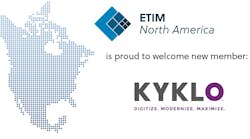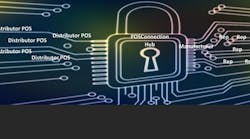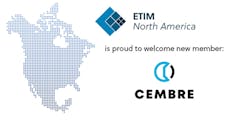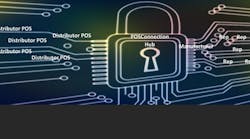Today's need-it-now world of instant information and next-day shipments can make a field salesperson feel a tremendous amount of pressure to leverage as much value as possible from the time he gets in front of a purchasing agent. Sales-automation tools have become a powerful ally in that struggle for better, faster and more innovative ways to make thesale, and your salespeople are clamoring for a laundry-list of hardware and software. Deciding which tools they really need is the trick.
Purchasing computer equipment, hardware or software, is a daunting task for most of us. It's expensive, it's complicated, and its relatively short shelf life is an endless source of frustration. The minute you install the stuff and are operating at a modicum of efficiency, you discover it's obsolete or, at the very least, needs to be upgraded. It's enough to make a business owner pull his hair out in a techno-phobic frenzy. But you can save your hair and your sanity if you approach any sales-automation purchase with these four steps:
1. Separate the actual need from the perceived need. "I think the perceived need on the part of the sales organization can be very different from the actual need of the sales organization," says Michael Fromm, president of Fromm Electric Supply Corp. of Reading, Reading, Pa. "There are many reasons for this, not the least of which is that today technology has become a status symbol in sales." Sales professionals, naturally, will tend to compare notes with other sales professionals in other industries. In so doing, they develop a perception of what they need relative to what others in their field are using. "When you marry the status symbol with the perceived need of the salespeople, I think you can arrive at a conclusion that often isn't representative of the true need of the company," says Fromm.
Somewhere, between the cell phone and a pager and the expensive laptop complete with the most sophisticated telecommunications and data-management software, is the equipment that most salespeople need to do their jobs well. Fromm recommends sitting down with your salespeople and discussing and listing what needs to be accomplished in the field with the technology. Then categorize the items on the list as having value to the customer, sales productivity value or salesperson convenience value.
"When someone says, 'We need this,' I'd ask two questions," says Fromm. "'Why do you need it?' and 'Which of the three categories does it fall into?' If it's just convenience, great! We'll take a look at all the technology we need as a company to give you convenience. But clearly you understand, Mr. Salesman, that the payback on that is not nearly as beneficial to us as the payback on something that would fall into category one, customer value." In an honest discussion with salespeople, you can determine where the perceived need ends and the actual need begins. Then by categorizing it, you can also understand the urgency of the need.
Phillip Hale, the director of computer services for Elliott Electric Supply Co. in Nacogdoches, Texas, agrees that at times salespeople can get carried away with all the technology available. "They go into these CompUSAs and Best Buys and see all these neat gadgets, and then they go a little overboard," he says. To get around that problem, the company has each salesperson work up a proposal for the equipment he or she feels is needed for his or her job. He says this can vary greatly because an industrial sales-person needs a bigger machine with more slots (i.e., for a modem connection or CD-ROMs, etc.) to do things, versus an outside salesman who's just making calls on contractors, but needs a better screen because the laptop will be set up on the hood of a truck out in the sun.
Once the proposal is made up, the salesperson has to get pricing from several different vendors. The salesperson's branch manager and Bill Elliott, the company president, must approve the proposal. Elliott Electric's computer services department must then approve it, and the salesperson must kick in a percentage of the cost of the equipment ordered.
"There are several advantages to that," says Hale. "The salesman is happy with what he gets because he picked out exactly what he wants to do his job. And, since the salesmen kick in part of the cost, they tend not to go overboard on what options they request, so they're able to stay within company pricing constraints."
2. Be realistic about the technological limitations of your company and customers. Depending on the type of technology you're considering, some very important and expensive upgrades may be necessary for your in-house systems in order to optimize the capabilities of the technology that you give your salespeople. For example, if you plan to equip your salespeople with laptop computers and give them access to your mainframe, can your in-house computer system let 20 of your salespeople simultaneously come in over a modem line? Michael Fromm says you must look at what compatibility issues might arise. "Look at the actual capabilities of your systems, whether they be telecommunications or MIS, so that you're not equipping your salespeople with technology that really gives you a snazzy front end without the proper back end," he says.
This point extends to taking stock of your customers' technological capabilities, too. If a customer does not have a separate, outside phone line where your salesman can connect his laptop modem, then you may not be able to capitalize on this great investment. "You need to be very careful in assessing both the in-house and on-site capabilities before you begin arming your sales force with what looks like impressive technology, but which might end up being an embarrassing display of ineptitude," Fromm says. "I'd rather just say, 'Hey, can I use your phone?' and call my inside guy to find out if we have 1/2-in lock nuts in stock."
Fromm says in equipping a sales force with laptop computers, the goal is for them to be able to sit in front of a customer and not only check to see if what they need is in stock, but also commit the inventory and place the order. Before that can happen, the salesman must plug the computer into an available phone line that works and have a computer system back at the office that will let him in while that customer sits there tapping his fingers on his desk. Then the system must boot up, and he's got to get onto the modem line, hopefully without redialing. Then the system has to allow him to get into the real-time inventory database that resides on the mainframe or server back at company headquarters-before he can tell the customer 'Yes, I have those 1/2-in lock nuts.'
"Having a laptop sounds great, but the question is just how functional is it?" says Fromm. "More often than not the perceived need and the perceived functionality is far greater than the actual need and actual functionality. So we end up paying for glitzy technology and under-utilizing the tools."
Bill Smith, a supply contract specialist at Fromm Electric Supply agrees that this is a problem distributors run into in trying to outfit an outside sales force. "Not every customer has that [phone line] availability," he says. "In an everyday sales situation, it's just not practical for an account manager to go into every place and try to boot up to check prices and inventory. It's still easier to do that via fax or e-mail with an inside sales group, or just with a phone call to them."
Smith, who has been using the laptops for about two years for inventory and presentations, says some customers are more accommodating than others, but it's no longer just a case of checking to see what the price of fuses is today. "It has become a service-provider issue," he explains. "You're trying to provide solutions for the customer, so they'll usually go out of their way to work with you."
Once connected, the salesperson must be very competent and knowledgeable in using the software application, too, or he'll end up looking like a buffoon in front of the customer, Smith adds.
R.L. "Duff" Greenwood, vice president of the contractor and industrial division of Cleaves-Bessmer-Marietti, Inc., a manufacturers' rep agency based in Kansas City, Mo. agrees this is important. "We expect our people to be proficient in the use of the software programs that they have on their laptops," he says. "And we discourage sales people from loading extraneous software programs on them, because then we run into the problem of providing support for all those programs." These programs also may not be compatible with other software on the laptop and could cause problems with the laptop or with other programs that reside on the system. Also, the data from that program may not be transferable to other programs or system the company uses. "We tell them if you want to load your own private software, then go buy your own private computer, because this tool belongs to the company," he says.
Because it's difficult for a sales rep to utilize a laptop out in the field, most of Fromm Electric Supply's sales people still just have a beeper, a cell phone and voice mail. But everyone has been outfitted with an e-mail account, and they utilize e-mail very heavily. At all of their branch locations, there are PCs available for salespeople on the road to come in and check their e-mail via the Internet. "Certainly, it can't be used for critical-type things," Smith concedes. "But it allows them to stop during the day and check e-mail, respond to people and forward information in a timely manner. You can e-mail a quote back and forth to someone internally who is working on it, then they can fax it out to a customer or e-mail it to the sales people. So then there are copies to everyone, there's a lot less paperwork, and it takes less time. It can be a real timesaving tool if you use it effectively."
3. Consider all of your equipment options and the limitations of each one. There are sales-force automation tools ranging from extremely simple and stripped down devices with few features to very complex portable computers with every imaginable feature. When you look at the functional capability of the technology, make sure you have the ability to get the highest value from all of the different features.
Laptops enable salespeople to write letters, use spreadsheets and surf the Web. The question is, how do they fall into those needs categories and how compatible are they with your in-house systems? Ask yourself if they will help salespeople become more productive and react faster to customers' questions, or are these features just for convenience?
"What may end up happening is that you have this neat laptop computer, but it's really nothing more than a way to retrieve e-mail," warns Fromm. "If you're buying full-blown laptops so that your salespeople can retrieve e-mail, you've jumped over and above several levels of technology that could satisfy that need."
If you do want to venture forth into the world of mobile PCs, ask what applications the salesperson needs to run and where he or she will be going with it. What kind of environment will he or she be in? Is this laptop going to be sitting in the back seat of a car a lot, or is the sales person going to be in manufacturing plants with it, or on a construction site?
The minimum hardware you should expect to invest in for each laptop, according to Fromm Electric's Bill Smith, is about a 133MHz Pentium processor with no less than a 1.5GB upgradable hard disk drive. It will need two slots-the PC-MCIA slots for a modem, and if your company operates on a PC network, it will need a LAN card. Also, you should consider getting an active-matrix display (a type of color monitor with more expensive technology that provides a clearer screen without color bleeds, which is better for applications such as AutoCAD). And, the laptop may need to have a CD-ROM drive because of the applications sent from vendors on disk.
You also may want to check out hand-held computing devices such as the PalmPilot. Fromm says the reason the PalmPilot is popular is not because it's feature rich, but because it's just very good at the limited number of things it can do. These tiny, portable PCs generally have a limited amount of memory and are little more than an electronic appointment and address book that will let you store and view contacts, tasks or appointments, and compose and review e-mail (retrieved via a separate modem). They are simply a straightforward and quick way to take notes and retrieve a limited amount of information.
More sophisticated hand-held devices have become available recently that enable you to run more sophisticated applications, but their prices start at over $1,100-which approaches the cost of a notebook or laptop computer.
On the other side of that spectrum is the full-blown laptop computer that is very feature-rich-but far less user-friendly, especially for less technologically savvy salespeople. So, it's just as important to understand the compromises you'll need to make as it is to understand the functionality of the technology before you buy.
Once you've done the needs analysis with your sales people, determine whether the technology you are considering will require you to upgrade your in-house system. "If you don't have the right telecommunications, datacom or MIS systems to accommodate a sales force equipped with certain tools, you could find yourself with guys out there shooting blanks," says Fromm.
4. Plan for obsolescence. It's important to look at the current needs of your company and the current technology, and try to understand where your sales force will be in six months or a year.
For example, if your company plans to move into an area of sales in the near future, such as industrial accounts, that will require your salespeople to use large, memory-guzzling programs on their laptops, it doesn't make a lot of sense to outfit them now with stripped-down systems that will need to be upgraded with a larger hard drive or faster operating system in six months.
Take stock of where your company is headed, what your future customer base will likely be. Then ask yourself how committed you are to supporting an automated sales force. Once you have all of these questions answered, you should be well-prepared to make your technology-purchase decisions.








